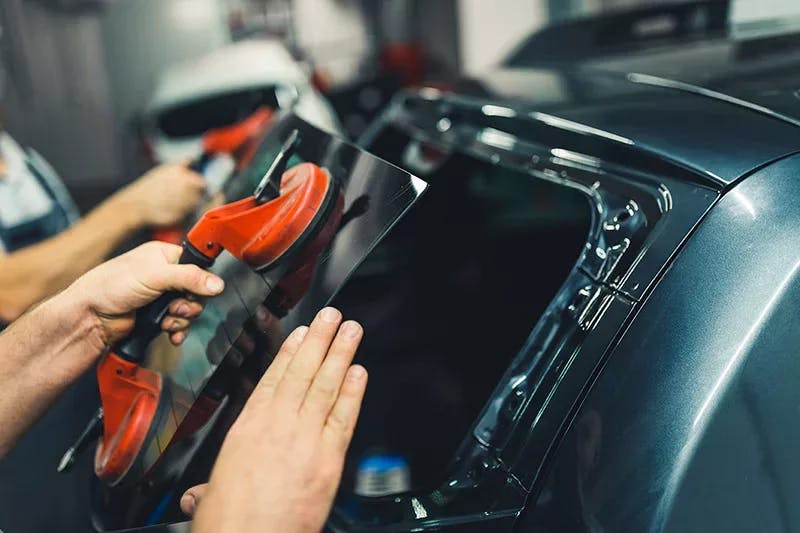Adhesive Bonding Precision
The accuracy of adhesive application is paramount in glass assembly, directly affecting the final product's durability and aesthetic appeal. Fluid dispensing systems offer engineered solutions designed to apply adhesives with exact precision, ensuring uniform distribution that adheres to strict specifications. This accuracy is crucial for forming strong, reliable bonds between glass components, reducing the chances of misalignment or bond failure. Additionally, these systems' ability to dispense the precise adhesive amount needed for each assembly minimizes the risks of overflow or insufficient bonding, thereby elevating the quality of the final product.
Less Material Waste
Material efficiency is a significant concern in glass assembly, where every drop of adhesive or sealant counts. Fluid dispensing systems tackle this issue head-on by applying the exact amount of material needed, dramatically reducing waste and enhancing cost-effectiveness. This not only leads to a reduction in material consumption but also promotes a cleaner work environment and bolsters sustainability efforts by decreasing the need for material production and disposal. The focus on minimizing waste not only supports economic benefits but also aligns with growing environmental consciousness within the industry.
Customized Dispensing
The diversity in glass assembly designs—varying shapes, sizes, and unique bonding requirements—calls for versatile dispensing solutions. Fluid dispensing systems rise to this challenge with customizable features, including programmable settings and interchangeable components, allowing for precise adjustments to meet specific dispensing needs. This adaptability ensures optimal performance across a wide range of glass configurations, guaranteeing that each component is assembled with the highest accuracy and care.
Production Flexibility
The fluctuating demand in glass assemblies requires manufacturers to be agile, capable of quickly adapting to changing order volumes and product designs. Fluid dispensing systems designed for swift changeovers empower production lines to transition between various glass assembly configurations with minimal downtime. This flexibility is a game-changer, enabling manufacturers to efficiently meet market demands, reduce lead times, and enhance throughput, thereby maintaining a competitive edge in the fast-paced manufacturing sector.
Consistency Through Automation
Automated fluid dispensing systems introduce a level of consistency in the glass assembly process that manual methods struggle to achieve. Automation ensures that each adhesive and sealant application is performed with uniform precision and care, significantly reducing product variations and defects. Maintaining consistent quality is vital, especially in industries where glass assemblies are critical to safety and functionality, underscoring the importance of these automated systems in upholding high-quality standards.
The Role of Glass Bonding Adhesives
Glass bonding adhesives are integral to the glass assembly process, offering benefits like structural integrity, aesthetic enhancement, air- and water-tight seals, excellent thermal insulation, UV resistance, chemical resistance, shock absorption, and flexibility. These adhesives are easily applied through fluid dispensing systems, which can be automated to increase productivity, especially for glass pieces with irregular shapes. Besides reducing the overall weight of the product, glass bonding adhesives also help dampen vibrations, reducing noise transmission—a critical advantage in automotive glass applications and beyond.
Considerations for Choosing Glass Bonding Adhesives
Selecting the right glass bonding adhesive involves considering the materials to be bonded, environmental conditions, load support, and the type of curing needed. These factors ensure the chosen adhesive caters to the specific requirements of each application, enhancing the durability and functionality of the bonded assembly.
Key Takeaways
- Adhesive Bonding Precision: Achieve strong, reliable bonds with precise adhesive applications.
- Less Material Waste: Minimize waste, enhancing cost savings and promoting sustainability.
- Customized Dispensing: Adapt systems to meet the unique requirements of various glass configurations.
- Production Flexibility: Respond swiftly to market demands with quick changeovers.
- Consistency Through Automation: Ensure uniform quality, reducing variations and improving product integrity.
Glass Manufacturing Fluid Dispensing Solutions
Designetics recognizes the pivotal role of fluid dispensing systems in enhancing glass assembly processes. Our comprehensive suite of solutions is meticulously crafted to tackle the unique challenges faced by the glass manufacturing industry, offering precision in adhesive application, customization, and automation. By choosing Designetics, manufacturers gain access to systems that are not only efficient and reliable but also tailored to their specific operational needs. Our dedication to innovation and quality ensures that our clients are equipped with the best fluid dispensing solutions available, driving excellence in their glass assembly processes. Explore our offerings and discover how Designetics can elevate your manufacturing efficiency and product quality.
